John Schmidt: Keeper of the Woods

On a sunny Spring afternoon, AFF staff followed lovingly crafted homemade signs down narrow West Virginia roads. Our van ambled up the lane into John Schmidt’s driveway and he met us, property map in hand and a smile on his face. Out of the front porch door bounded two toddler granddaughters and his wife, Jean, who opened their house to us. We were traveling to learn about John’s woodlands, which he enrolled in AFF’s Family Forest Carbon Program (FFCP), a project of American Forest Foundation and The Nature Conservancy. Little did we know that we were to receive much more than a tour; we got a glimpse into the life and deep ecological commitment he has nurtured over decades.
When 60 acres behind his house in Randolph County, WV went up for sale, John acted quickly. The land was headed for suburban development and already, the developers had already roughed in terra cotta pipes for water and sewer.
Today, the pipes are covered in ferns and forest understory in a flush, oxygen rich environment. If you’re not looking you might miss them and that’s just fine with John.
Instead of letting the land be developed, John enrolled in the Family Forest Carbon Program (FFCP), a carbon project designed specifically to equip small landowners with the technical and financial resources to improve the health of his trees and capture and store more carbon from the atmosphere.
John Schmidt is and always has been an outdoorsy guy and a family man. After forestry school, he worked his way to becoming a Supervisor for Fish and Wildlife and focused his career on important environmental issues like habitat restoration and clean water. These days, he continues his efforts by sitting on the Board of Directors for Partnerscapes, a national conservation organization promoting voluntary conservation on private land.
He cares deeply about promoting native species and encouraging wildlife habitats, and even though he’s retired, he is still active in his community’s woodland preservation efforts. Today, he sits on the board for the West Virginia Land Trust and has been a local fly-fishing guide for over a decade.
A Botanical Wonder
A short walk behind his house and AFF staff were enveloped in the natural world. The temperature and humidity changed; the world got a bit quieter. Leading us down the roughed-in winding trail, John promised us orchids, blue birds and mushrooms like oyster, chanterelles and chicken of the woods.
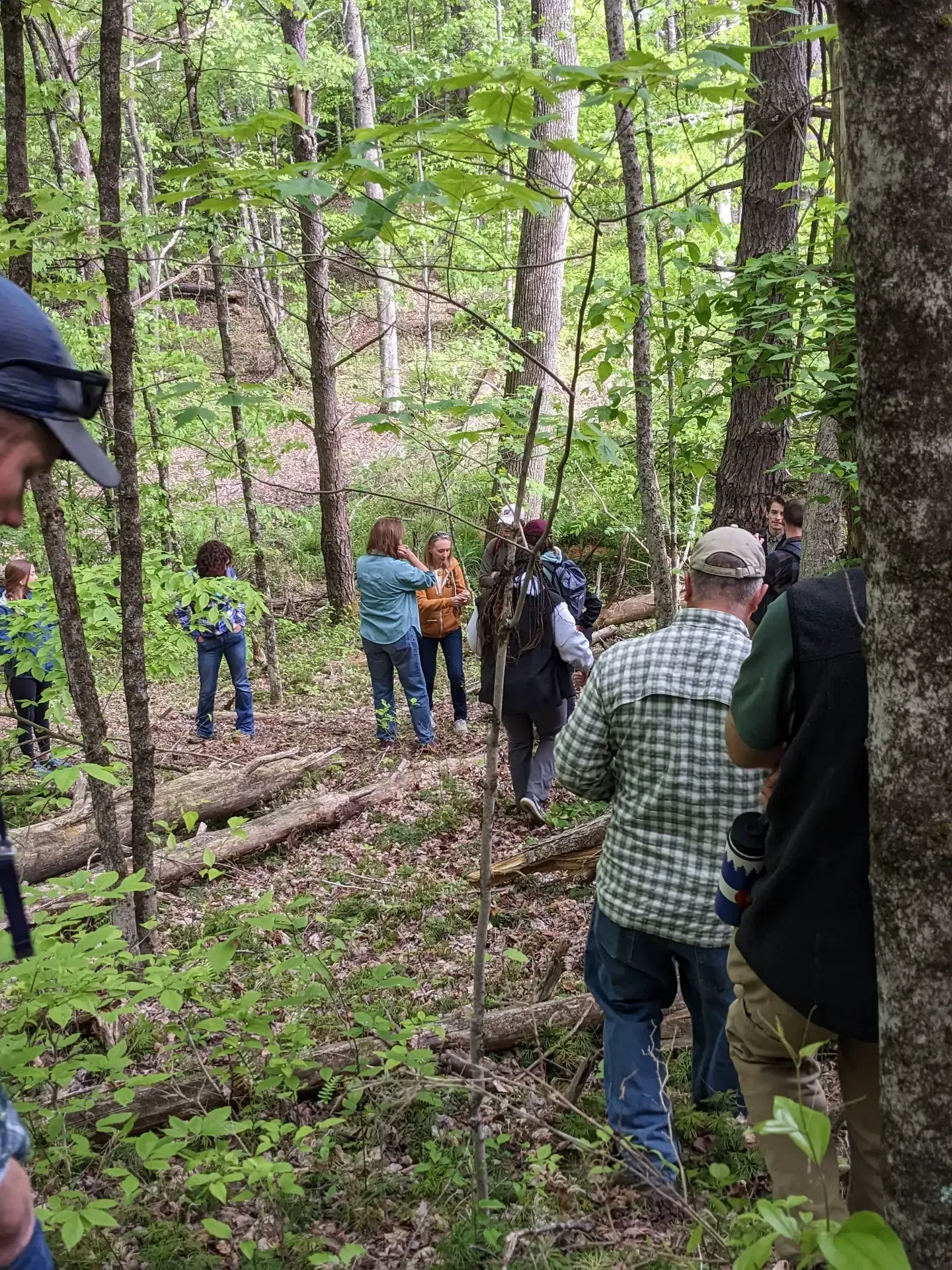
John Schmidt leads AFF staff down an embankment on his property. As the group moves through the woods, AFF staff is able to appreciate the beauty of Schmidt's property.
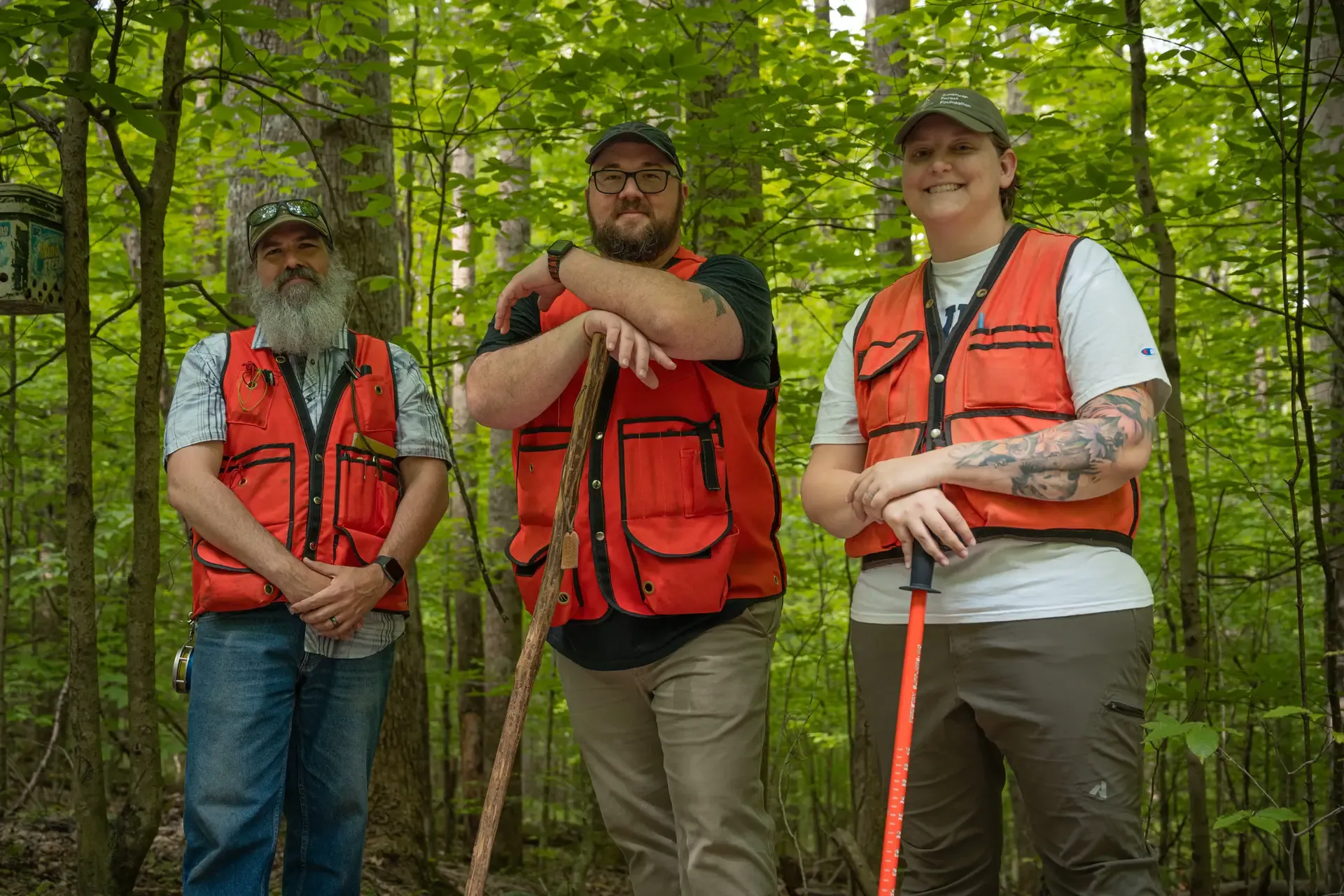
FFCP Foresters Isaac Slone (left), Ian Forte (center), and Brittney Hartzell (right) helped facilitate our walk through John Schmidt's property. With their forestry expertise, they were able to tell AFF staff about the history of the Schmidt property's forests and highlight how the Schmidts healthily managing their woodlands. ©Stephen Taglieri
In the AFF tour were three of AFF’s expert foresters, Brittney Hartzell, Ian Forte, and Isaac Slone. As we made our way through the brush, they gave advice on how to promote a healthy understory and protect the trees enrolled in FFCP so that they can capture and store more carbon. John had decided that FFCP was right for his land because he could not only help the environment, but he could get professional advice along the way. FFCP is unique in that along with management plans for each individual forest enrolled, the expert foresters are available to enrollees for on-the-spot questions.
West Virginia’s native plants are one of John’s passion projects. In order to protect and promote their wellbeing, he’s created intentional practices that foster a holistic ecosystem. “I like to pride myself on being the only forester who ‘weeds’ his forest,” he explained.
As he walked us up the densely covered hills, he uprooted invasive weeds to prevent native plants from being choked out in the understory.
One particular native plant undertaking was his effort to grow red clover. Populated throughout several sunspots, he showed us carefully constructed nurseries for red clover seedlings in raised wooden boxes with long rungs. Since clover is a treat for grazing deer, he constructed the nurseries to protect and encourage their growth.
Forester Tip: Build a loose “dam” made of brush around the base of trees you want to protect. Deer are not prone to walking through brush, so the dam keeps the deer rubbing on the bark, which creates opportunities for disease to set in. Keep the brush loose, though, so that rats or other vermin do not make nests.
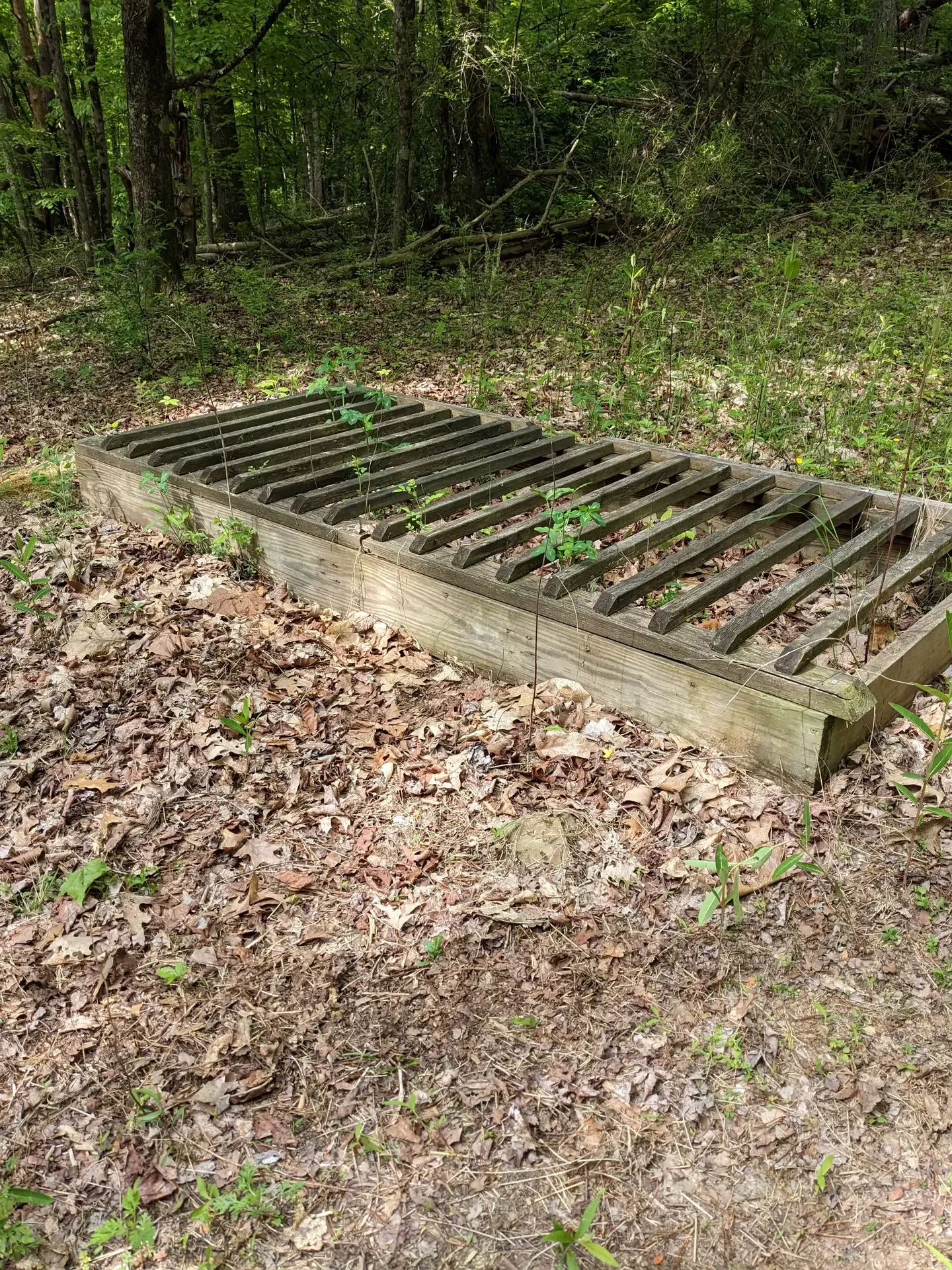
Red clover nurseries were constructed in sunspots across John Schmidt's property to help grow the population in the area.
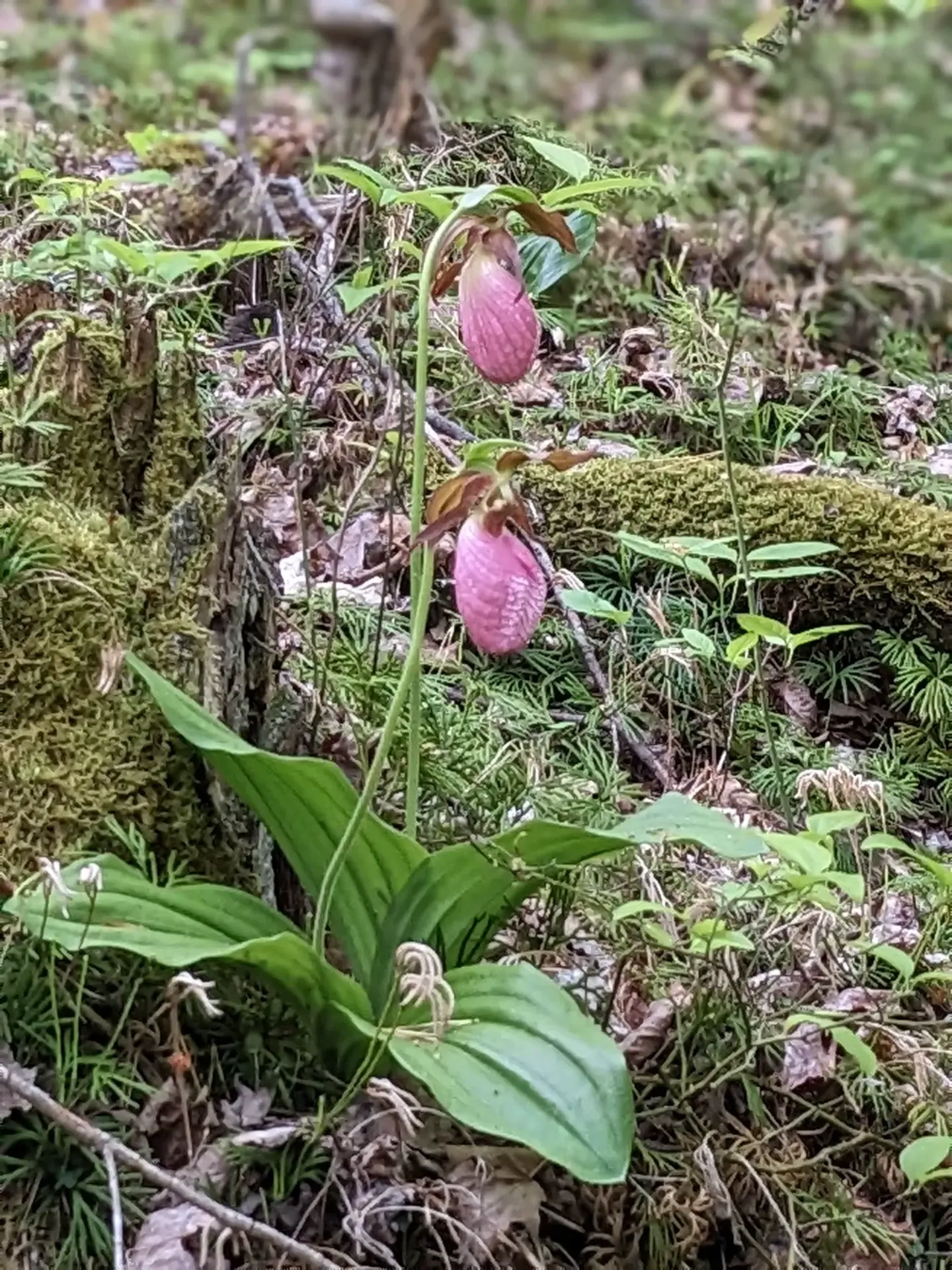
Pink lady slipper orchids found on the Schmidt property.
Deeper into the trail, John pointed his walking stick toward a small embankment. There nestled in the ferns were a handful of his prized pink lady slipper orchids, sprouting bulbous pink petaled mouths open to the humidity. His dedication to these and other woodland flowers was heartening. At one point during the tour, he stopped the group mid-climb to build a wall of small logs around an orchid seedling that had found its way onto the path, explaining that the trail must now make room for its newest inhabitant. Along with 7 species of orchids, including Nodding Lady’s Tresses and Three Birds, he fosters Flame Azalea with striking yellow flowers balanced high on pencil-thin branches. He hopes that with enough of his care and attention, it will multiply.
Every county in West Virginia is eligible for the Family Forest Carbon Program. Basic eligibility requirements can be found on our website: Check to see if your woods are eligible today!
“I like to say I play as a wildlife biologist.”
John is a resourceful woodsman, using what he finds on the land or what he can repurpose to create an environment that attracts bears and deer for both forest management and food for his family. One particular deer stand he made from a large, plastic industrial liquid container that he cut a door out of, attached a small makeshift roof to and covered with camouflage netting. Nearby, he installed aerial, timed corn feeders to draw in game. His family uses these stands regularly and on average harvest 6-7 deer from his property each year, which is a part of his forest management plan.
Keeping the forest in balance includes keeping the grazing deer to a healthy ratio.
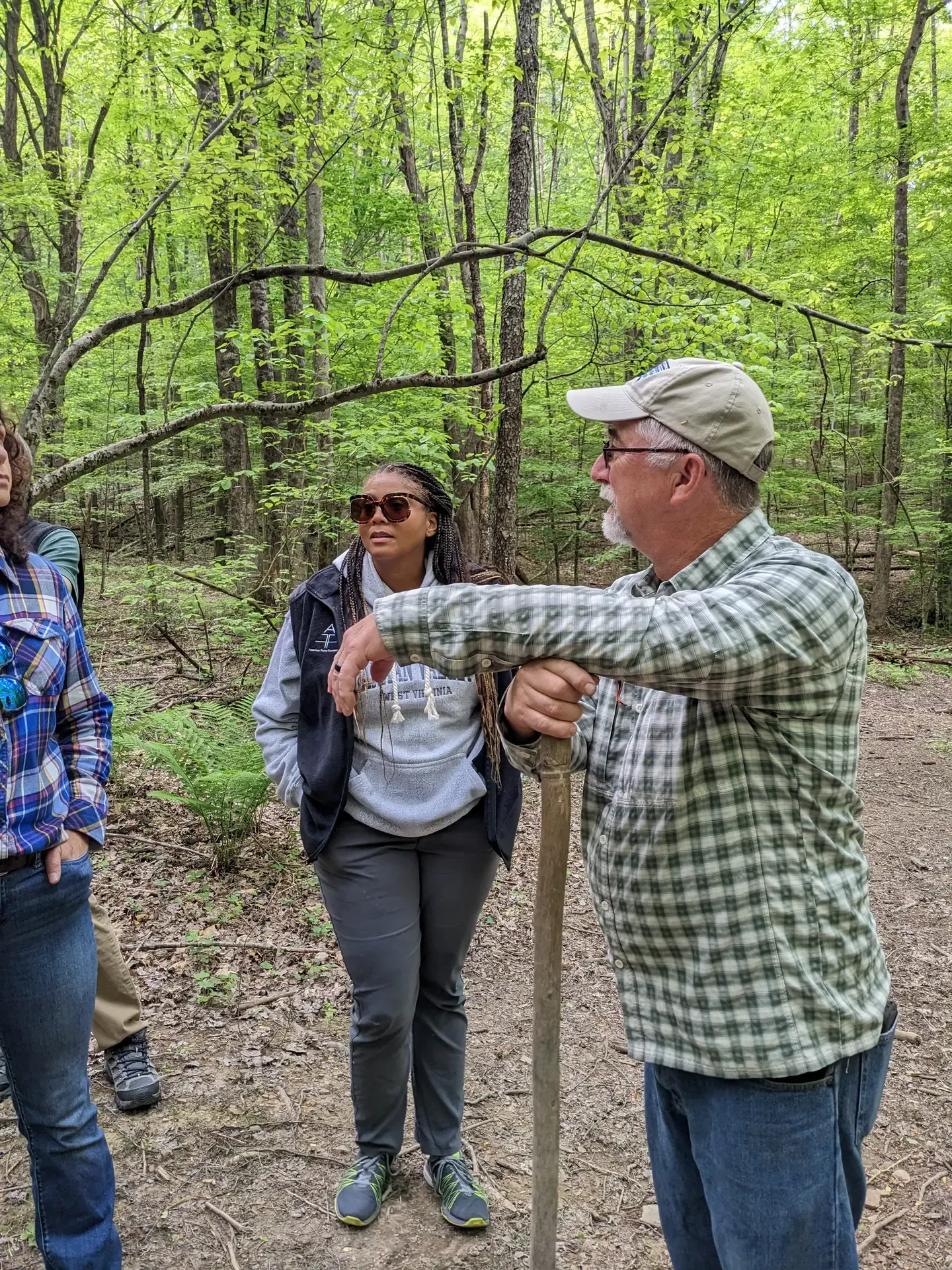
John Schmidt talks with Maya Solomon, AFF's Policy Director, and other staff as they hike the trails of Schmidt's property.
Less high tech in other areas of the woods, he hung what he affectionately referred to as “forest toys” - corn feeders he made from a used laundry detergent bucket he found discarded on the property. Showing off this bucket, John explained that deer and bears often tear it down, which provides both entertainment for him and a food source for them.
As we came to a long, grassy area devoid of trees, the group gathered in a large sunny patch among the 60 acres of timber. Outstretched before us was an acre of open field John dedicated to a pollinator habitat. The beneficial insects he hopes to attract will provide the required pollination of plants and trees that will keep his land healthy.
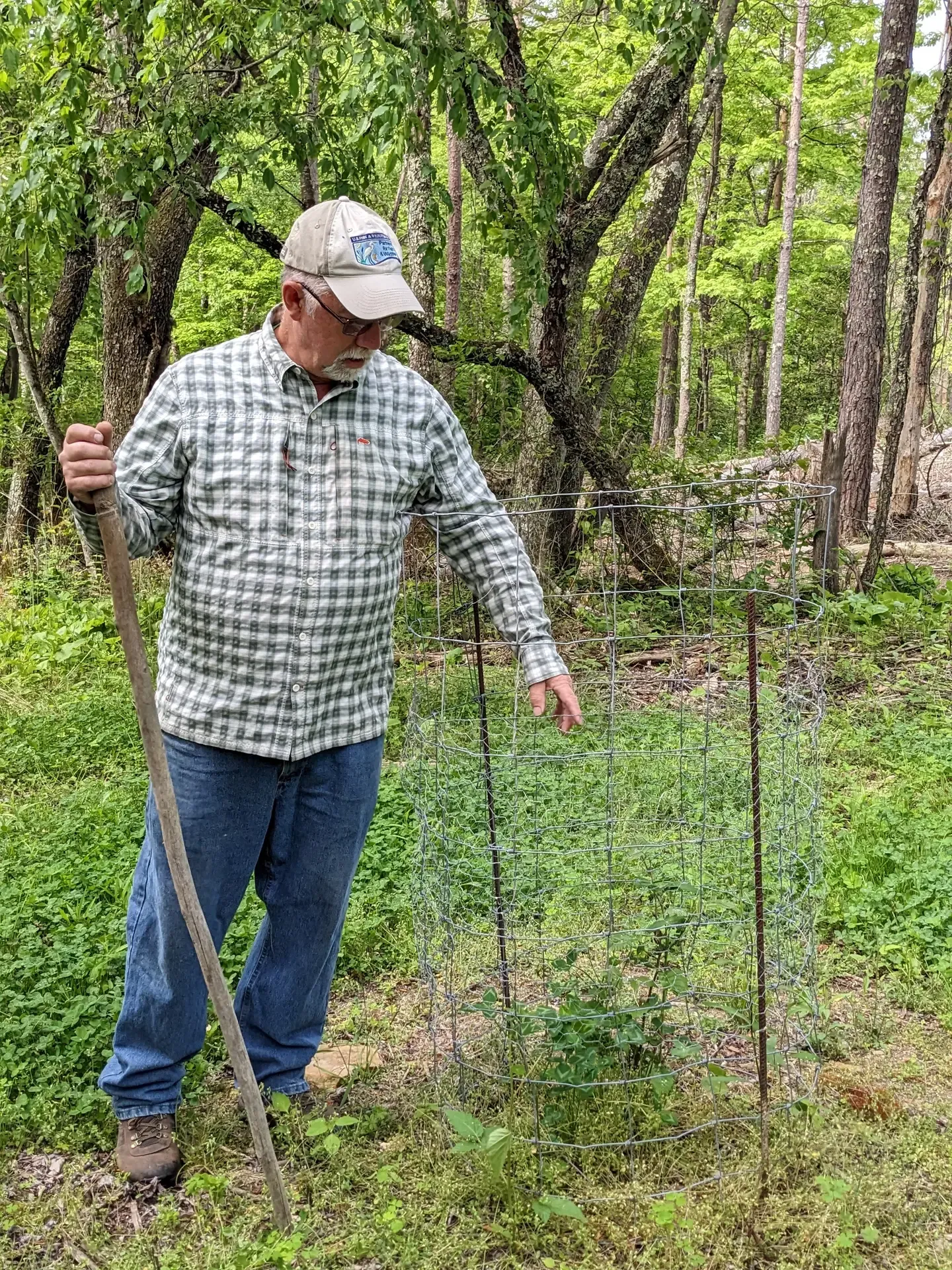
John Schmidt has fenced off this American chestnut so it won't be grazed by local deer populations.
Another biology project he has undertaken is to attempt to grow American chestnut trees. Each year, his neighbor’s tree produces hundreds of chestnuts in what John calls a “gold mine,” and he planted a few. We stopped to admire one young sapling he fenced to protect from deer. Inside the fencing, he let clover grow to give the little tree nitrogen. In the days of post-chestnut tree blight (Cryphonectria parasitica) which some have dubbed the greatest tragedy in American forest history, his delicate effort to nurture back the majestic species feels hopeful.
Carbon Capture is the Future of His Woods
John’s intentional efforts were true not only of someone who loves nature but also of someone who knows that healthy woodlands capture and store more carbon.
He enrolled 42 of his 60 [TK1] acres of forest in the Family Forest Carbon Program (FFCP), led by two conservation nonprofits: the American Forest Foundation and The Nature Conservancy.
He learned about FFCP one night through an ad that appeared on his Facebook feed. What attracted him to the program is that the annual payments help him manage invasive species. While other programs may help initially to control invasives, they do not provide long-term management funds. With FFCP funds, he can purchase the necessary means to keep the plants at bay.
John’s goals for his acres are long-term as he wants to keep it in his family and to protect it from suburban development. Coupled with the annual payments that help him maintain his land and access to customized forester support, enrolling in the program made good sense.
As we ended the tour, John talked about the future. When he enrolled his trees in FFCP, he signed a standard 20-year contract he viewed as a no-brainer commitment. His family is at the ready to continue his efforts, and looking ahead, he knows his children will keep the land for hunting, protect it from loggers and developers, and other outside threats.
His grandchildren will run the trails and he will be there to teach them about the importance of forest stewardship. As it is passed down, John will ensure that the next generation of keepers will inherit woodlands that continue to nourish our planet and provide them a home.
Learn more about enrolling your trees into the Family Forest Carbon Program today.
Related Articles
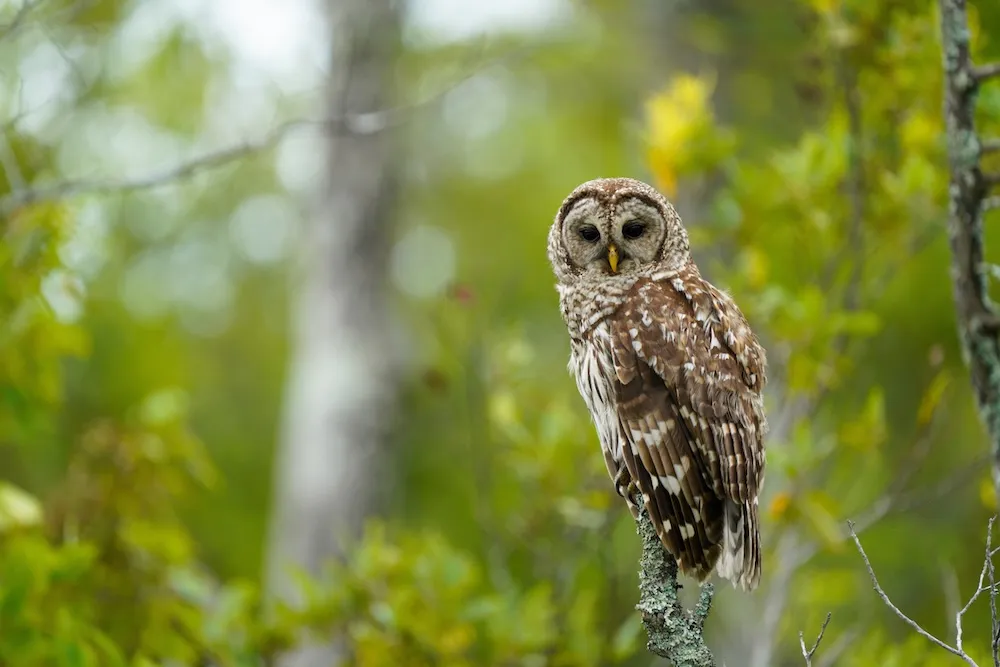
December 18, 2025
Improving Wildlife Habitat with the Family Forest Carbon Program
For many landowners, spotting a fox, songbird, or other wildlife on their property is one of the highlights of spending time on their land. In this post we look at some examples of management practices you may see in your FFCP forest management plan and how they help create the ideal conditions for certain wildlife species.
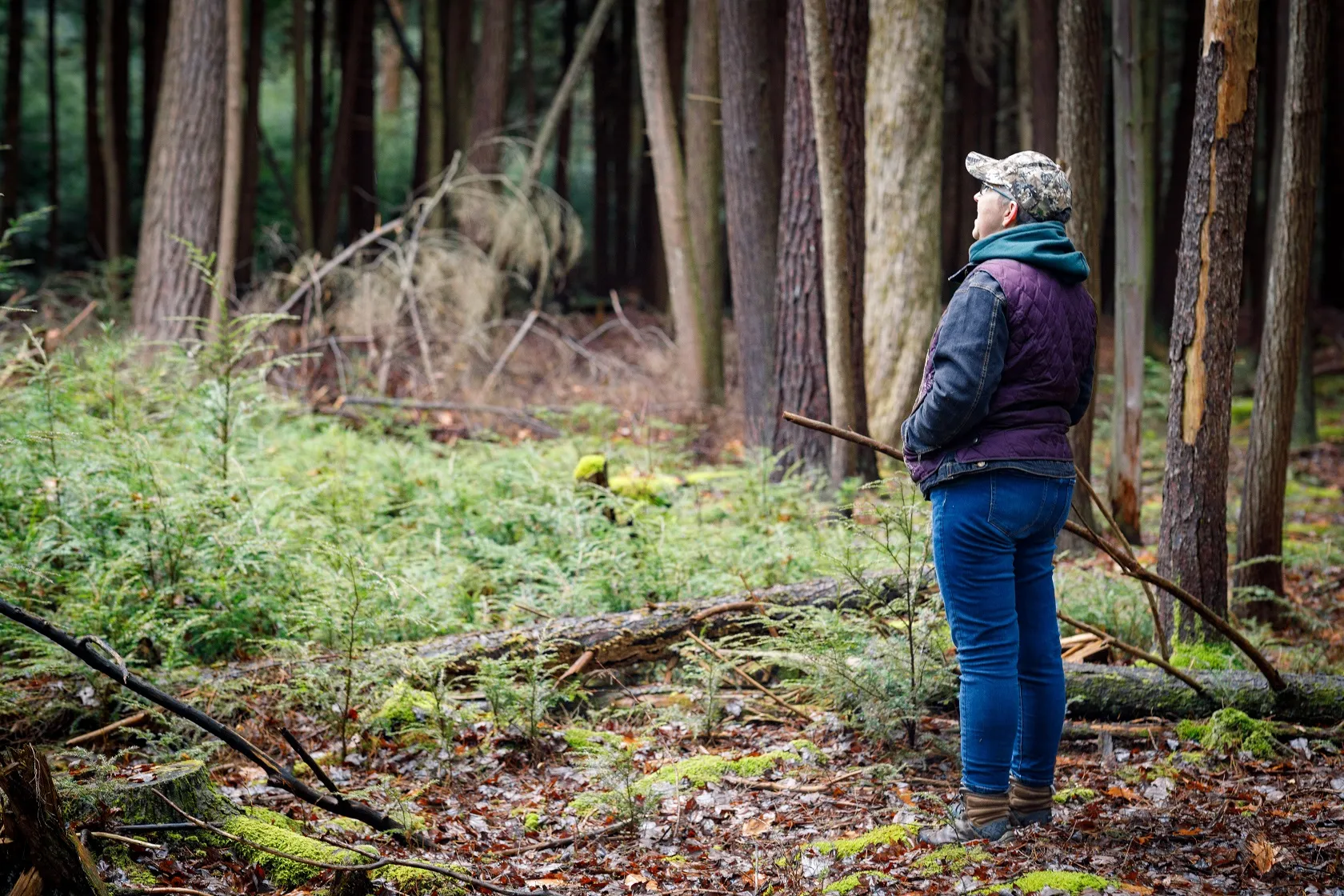
December 16, 2025
Family Forest Carbon Program's First Ever Credits Delivered to REI Co-op
Today, REI becomes the first buyer to receive carbon credits from the Family Forest Carbon Program (FFCP), a high-integrity forest carbon project designed for small-acreage landowners.
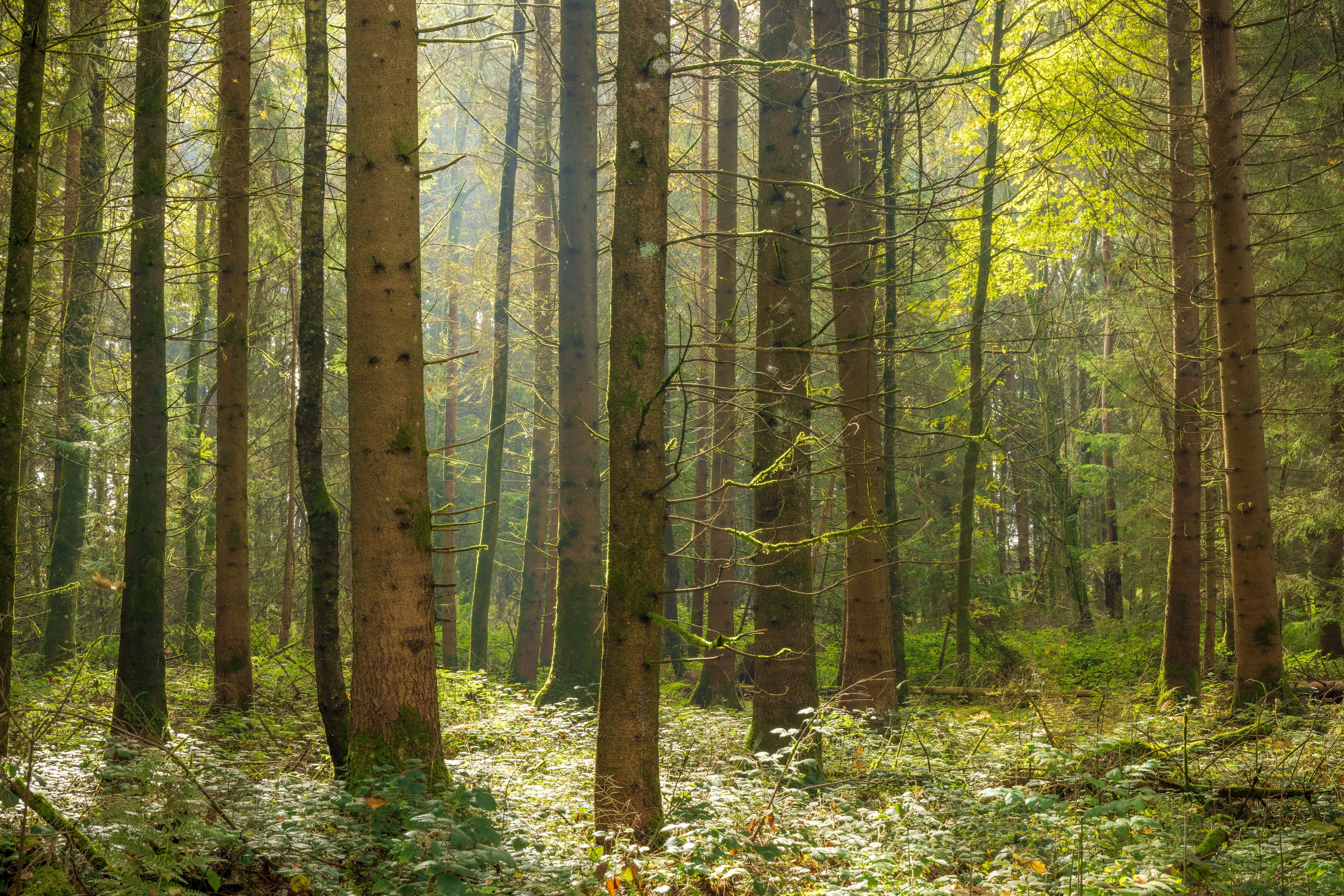
December 4, 2025
Forest Carbon Project Issued First Ever Credits
Conservation organizations the American Forest Foundation (AFF) and The Nature Conservancy (TNC) announced today the issuance of improved forest management (IFM) carbon credits to the Family Forest Carbon Program (FFCP) from standards setter Verra under its Verified Carbon Standard (VCS) Program. This marks the first issuance of credits produced using Verra’s VM0045 improved forest management (IFM) methodology, which was co-developed by Verra, AFF, TNC, and TerraCarbon.